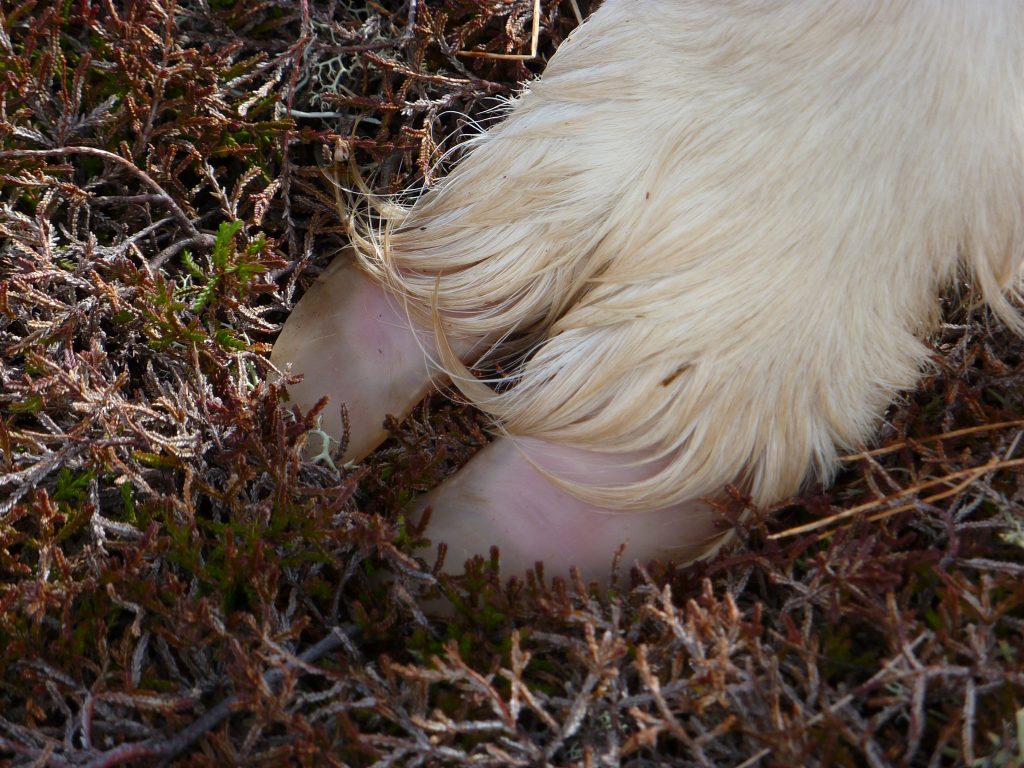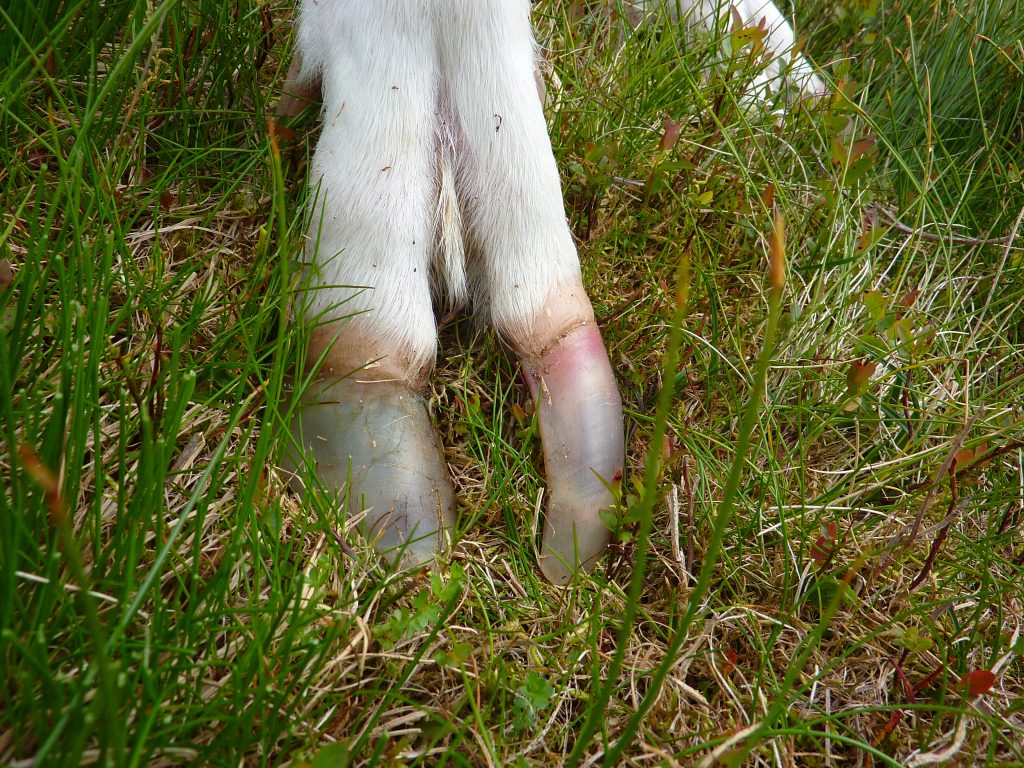
A common question we’re asked, usually after spending some time with the reindeer and noticing their beautiful big feet, is whether we need to trim their hooves. Reindeer are endowed with large feet with four toes to each hoof: two main weight bearing toes which do most of the work, plus two smaller and higher up toes which only touch the ground when on soft surfaces (snow or bog), when they spread out like a large snow shoe and mean reindeer can traverse snow drifts a lot easier than humans.



In general our answer is no, we don’t have to routinely trim the hooves of our reindeer. Just like our own nails, the hard outer hoof continues growing constantly throughout their lives, but as they are roaming fair distances each day over rough, rocky and stony mountainous ground, the amount of wear tends to balance this out and means their toes stay nice and neat. Of course there is no one out trimming the hooves of wild caribou and other deer, who get through their entire lives with perfectly shaped hooves, and as our herd are in the correct habitat with plenty of movement, they are usually fine without intervention.



However, there is always the exception to the rule. There are perhaps three reasons why we sometimes do need to dust off the hoof trimmers. First up is that we’re found our pure white reindeer (step forward Blondie and Matto in particular) have hooves that, for whatever reason, seem to grow faster than those of their darker coloured compatriots. Once or twice a year we’ll decide they are a little lengthy and have a trim to keep everything in place. Over-long hooves can cause all kinds of problems, especially putting pressure on their joints as their foot cannot sit correctly, so everything becomes misaligned. There’s an old saying “No foot, no horse”, and it applies equally to reindeer – without happy feet they can’t lead a happy life.




The second reason is if a reindeer has an injury or abnormality meaning a toe or whole hoof doesn’t receive the same amount of wear. Jute has one hoof which tends to grow a bit differently to normal, curving inwards instead of straight, which then prevents the edge wearing down in the usual manner. It’s no problem at all to him as long as we keep an eye on it and trim it as needed, but if we didn’t it could cause him difficulty walking as it grew.
And the third reason, embarrassingly, is pure laziness. This is where I’m going to point the finger squarely at some of our middle-aged males, the ones who can’t always be bothered to head off and graze as a real reindeer should, but who would much rather just lie waiting at the gate for their next meal to be served (Hamish, I’m looking at you). The straightforward reason that their hooves are too long is that they haven’t done anywhere near enough exercise to wear them down in balance with the rate that they’re growing. Perhaps we need to start a fitness club?! Funnily enough, there’s not a single female reindeer who falls into this category…

Thankfully, trimming the hooves of our reindeer is stress free. Every single reindeer in our herd is halter-trained as a calf and is well used to being around humans. That means that if we spot their hooves need some TLC we simply catch them, pop a headcollar on, and whilst one herder occupies them with a bucket of tasty treats, another herder gets to work with a pair of snips to cut back the hard outer hoof. There is no feeling in this section of the foot so no discomfort is caused, and despite the fact that we never work at teaching reindeer to have their feet lifted like you would with a horse, they very quickly cotton on to the fact that nothing bad is happening and just let you get on with it. We never need to use tranquillisers in order to trim hooves, or hold the reindeer in place by force.


My personal favourite technique is to crouch by a front leg, rest their knee on my knee, which leaves me two hands free to trim their hoof! Sometimes two hands are needed to cut through the tough hoof, especially on the old boys (hey, Elvis!) who have real “old man toenails”!

We’re pretty proud of how good our reindeer are at standing to have their hooves trimmed.
Andi




















